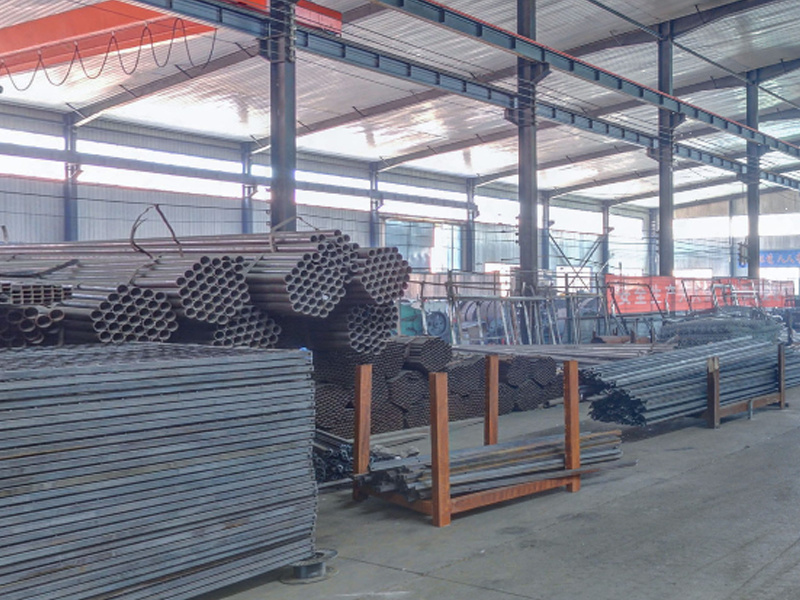What are the performance characteristics of highway guardrail net?
Jan 18,2023

What are the performance characteristics of road guardrail?
Road guardrail uses welded wire mesh as the base, and its surface is treated with an anti-rust coating of age-resistant polymer resin (0.5-1.0mm thick). It has characteristics such as corrosion resistance, rust prevention, acid resistance, alkali resistance, waterproofness, insulation, aging resistance, good touch, environmental protection, and durability

The plastic coating material of road guardrails has the characteristic of thermal softening and can solidify into a film after cooling. The first step involves physical melting, fusion, and film coating. The dipping process primarily uses thermosetting plastic powder. Typical high-pressure polyethylene, polyethylene, and polyethylene (tetrachloroethylene) are non-toxic coatings used for general decoration, anti-corrosion, and wear-resistant coatings. Generally, sprayed products are used indoors, while plastic products are mainly used outdoors. The cost of dipping is higher than electrostatic spraying. It is mainly used in: expressway guardrails, road guardrails, airport guardrails, landscape guardrails, regional guardrails, villa guardrails, public building safety nets, hardware frames, hurdle frames, sports equipment, etc.
Road network guardrails have characteristics such as rich color, beautiful appearance, high strength, strong durability, anti-static properties, non-fading, non-cracking, and resistance to breakage. They have become a decorative natural barrier. Used in the core of municipal roads, the clean and wide streets are bright and clear. Beautiful scenery adds splendor to our city, taking urban environmental construction to the next level
Development history of hot-dip galvanizing for road guardrails
The hot-dip galvanizing treatment for road guardrails evolved from the oldest hot-dip galvanizing method. Since France first applied hot-dip galvanizing to industrial production in 1836, it has a history of over 140 years. However, the hot-dip galvanizing industry has seen large-scale development only in the last three decades with the continuous development of cold-rolled steel strips. The main processing steps for galvanized sheets include: preparation of the guardrail wire mesh → pre-plating treatment → hot-dip galvanizing → post-plating treatment → quality inspection, etc.
According to common practice, hot-dip galvanizing processes are usually divided into two types based on the differences in pre-plating treatment methods: offline annealing and inline annealing. In recent years, hot-dip galvanized guardrails have been applied in many industries. The advantage of hot-dip galvanized guardrails lies in their long anti-corrosion period and wide adaptability to new environments, making them a very popular anti-rust treatment method. They are widely used in power towers, communication towers, highways, road guardrails, street light poles, marine prefabrications, architectural steel components, substation ancillary projects, light industry, etc.
Because hot-dip galvanized guardrails have a long anti-corrosion period, the actual corrosion protection duration varies in different environments: 13 years in industrial areas, 50 years in marine environments, 104 years in rural areas, and 30 years in urban areas. The principle of hot-dip galvanizing treatment for road guardrails is as follows: clean the galvanized mesh, then treat it with solvent, dry it, and immerse it in zinc liquid. The galvanized mesh chemically reacts with the molten zinc to form a fine-grained, strengthened zinc layer. The steps are: degreasing -- water washing -- pickling -- fluxing -- drying -- hot-dip galvanizing -- separation -- cooling and passivation. The thickness of the galvanized metal layer for road guardrails primarily depends on chemical components such as the silicon content of the steel, the cross-sectional area of the material, the roughness of the steel surface, the temperature of the zinc pot, the immersion time, the cooling rate, hot-rolling deformation, etc.
PREVIOUS:
Contact Us
E-mail :
Phone/WhatsApp/WeChat:
Address:
No. 12, Jing Si Road, East Industrial Park, Anping County, Hengshui City, Hebei Province








